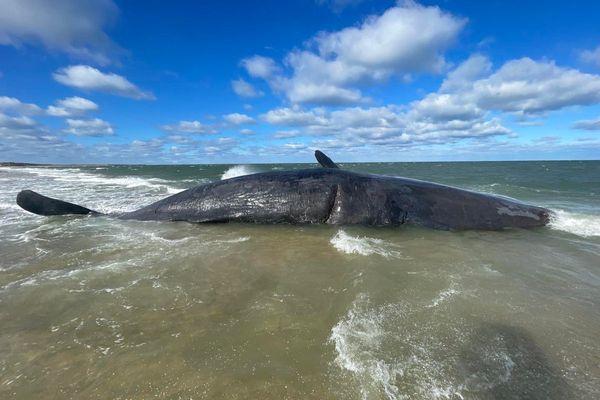
An asteroid the size of a truck is expected to pass by Earth in one of the closest approaches ever recorded, scientists say.
The United States federal space agency NASA said on Wednesday that the recently discovered asteroid would zip by about 3,600 kilometres (2,200 miles) above the tip of South America.
The asteroid, called 2023 BU, is expected to come about 10 times closer than the communications satellites that circle Earth.
But scientists insisted that there is no chance of the asteroid hitting Earth. NASA credited its Scout impact hazard assessment system with ruling out a possible collision.
“Despite the very few observations, [Scout] was nonetheless able to predict that the asteroid would make an extraordinarily close approach with Earth,” said NASA’s Davide Farnocchia, an engineer who helped create Scout. “In fact, this is one of the closest approaches by a known near-Earth object ever recorded.”
Thursday’s announcement came several months after NASA successfully tested a system in October meant to alter the path of asteroids that might be on a collision course with Earth.
The asteroid that will pass Earth on Thursday was not the subject of that programme, known as the Double Asteroid Redirection Test (DART). During that effort, an impactor the size of a fridge was crashed into an asteroid, successfully changing its trajectory in what the agency characterised as a promising method of planetary defence.
The current asteroid, 2023 BU, was discovered on Saturday. Scientists added that, even if the lunar rock came closer than expected, a substantial portion of the asteroid would burn up upon entering the atmosphere.
2023 BU is said to be between 3.5 meters (11 feet) and 8.5 meters (28 feet), and was first pointed out by an amateur astronomer in Crimea named Gennady Borisov, who also discovered an interstellar comet in 2019.
The asteroid will come close enough to the Earth that its trajectory will be altered by the planet’s gravitational pull. NASA said that it previously would have taken the asteroid 359 days to orbit the sun. After the near-encounter with Earth, its orbit is expected to increase to 425 days.







